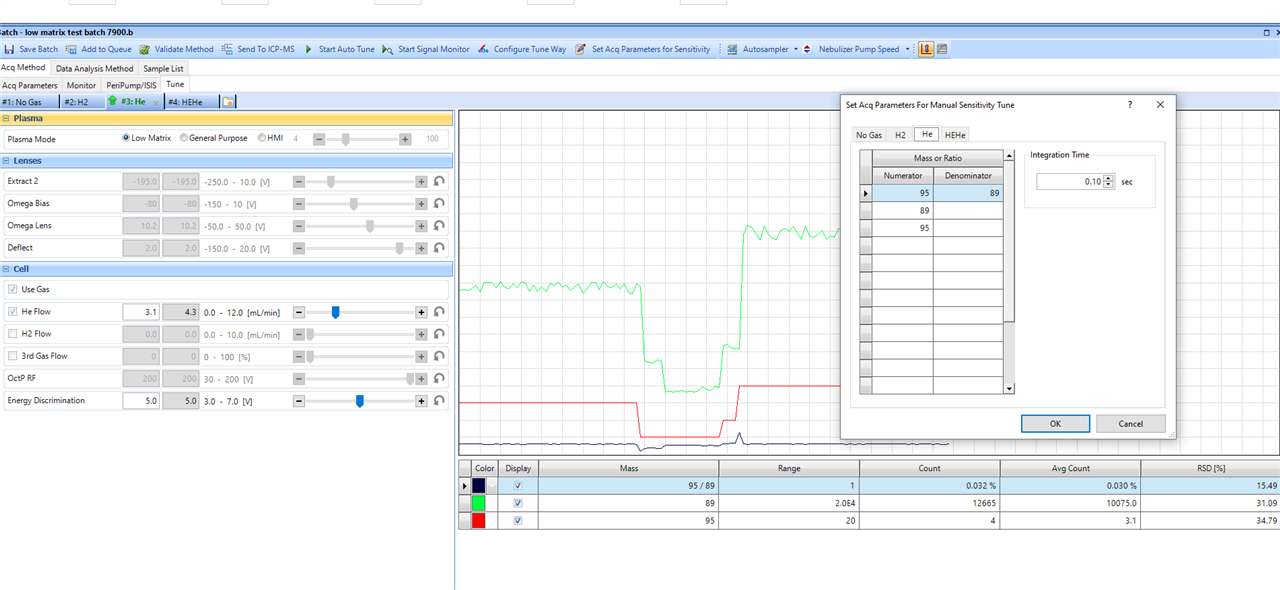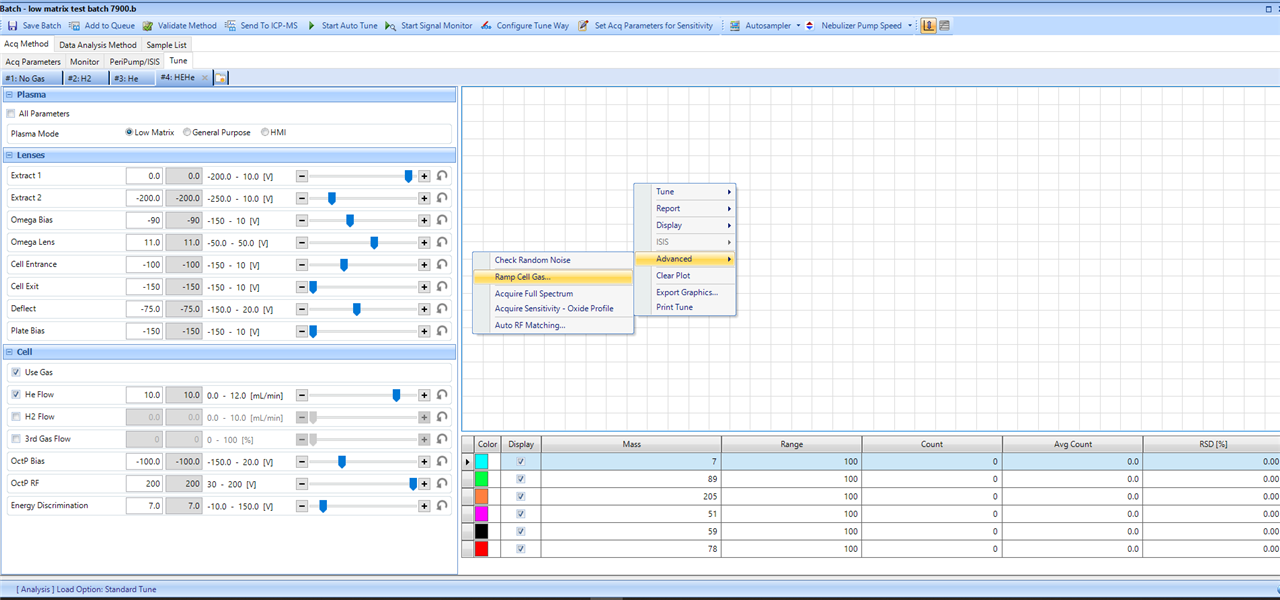How to find Signal-noise ratio in ICP-MS 7900? Because I am trying to figure out which Mo isotopes i need to use.
How to find Signal-noise ratio in ICP-MS 7900? Because I am trying to figure out which Mo isotopes i need to use.
Hi
Which version of mass hunter, you are using..
Hi Sel,
Normally the s/n ratio in the ICP-MS is the difference between the signal of the analyte of interest and the background of the interference. for example the difference between the 75As counts and only the 75ArCl counts in a HCl solution.
The BEC value in the MassHunter calibration line give you the equivalent of the noise. when the BEC value is lower then better the S/N.
Here an example extracted from a training slide:
Example: (1) assume 75As sensitivity is known to be 5,000 cps/ppb
(2) a sample (no Arsenic present) has a 78ArCl interference peak of 75,000cps
(3) then the BEC for ArCl at 75amu is 15 ppb
(75,000cps ÷ 5,000cps/ppb = 15 ppb)
There are several ways to find the best signal to noise (S/N) ratio. The first way is to measure the 10 ppb Agilent tune solution without Mo but added with some interferent for example a HCl, Mn and Ni that give polyatomic interference at the desired masses like 95Mo or 96Mo. Probably it's the best to start with the He mode to get the best S/N ratio. On the same moment you tune the He flow or optimize other lens parameters you measure the tune element 89Y. The ratio between the tune element and the background, measured on the desired Mo masses (e.g. 95Mo) give you the S/N ratio. This ratio can live be calculated in the MassHunter software.
below an example how it's looks like this way of S/N tuning.

it could be done automatically with the MassHunter software with the "Ramp Cell Gas" tool in the tune window when custom tune is selected.
Then you get a report with the optimum gas flow.
